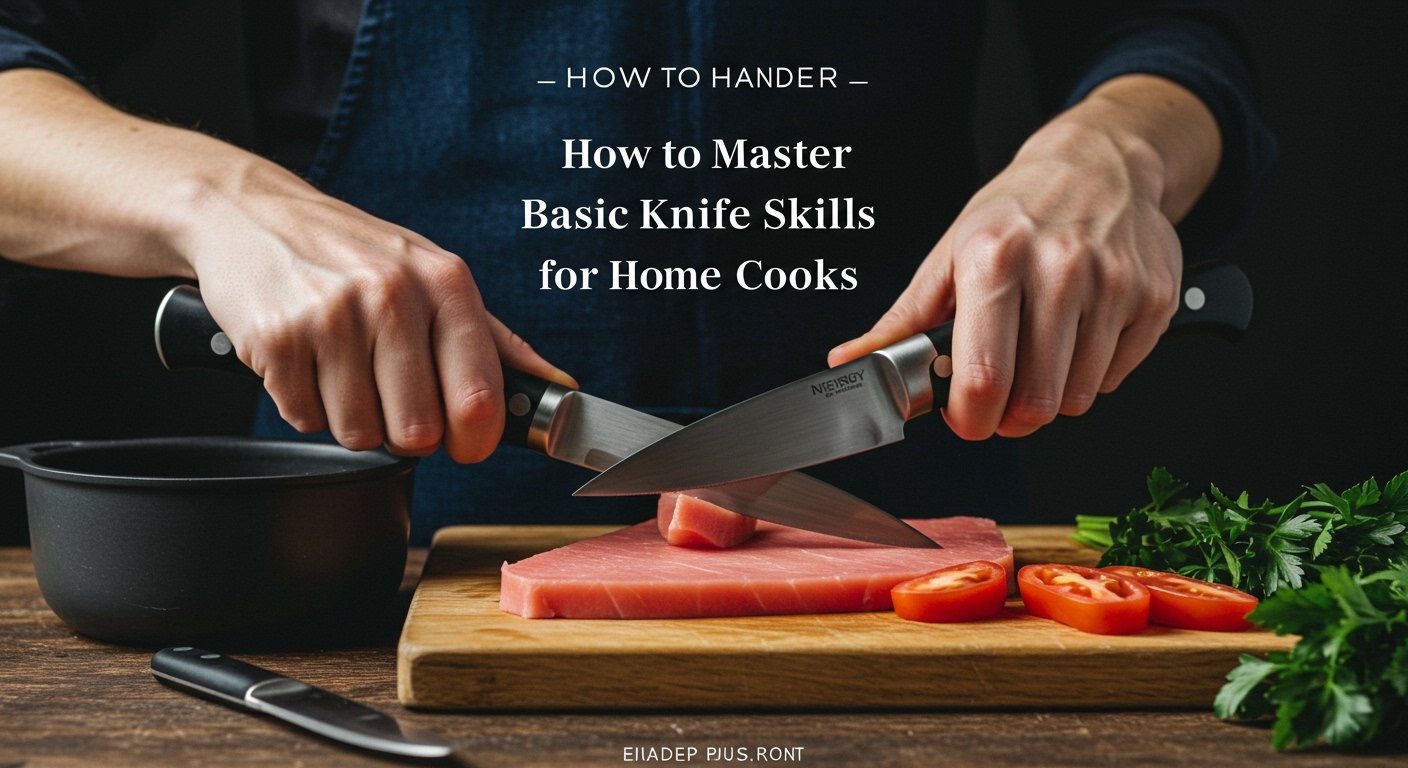For any home cook, mastering basic knife skills is more than just about speed and efficiency in the kitchen; it’s fundamentally about safety and consistency. While the thought of sharp knives can be intimidating, understanding how to handle them properly can transform your cooking experience, making meal preparation more enjoyable and significantly reducing the risk of accidents. Did you know that approximately 350,000 people are injured by kitchen knives each year, and over 63% of these injuries involve fingers? [5] Learning proper techniques is your best defense against becoming one of these statistics.
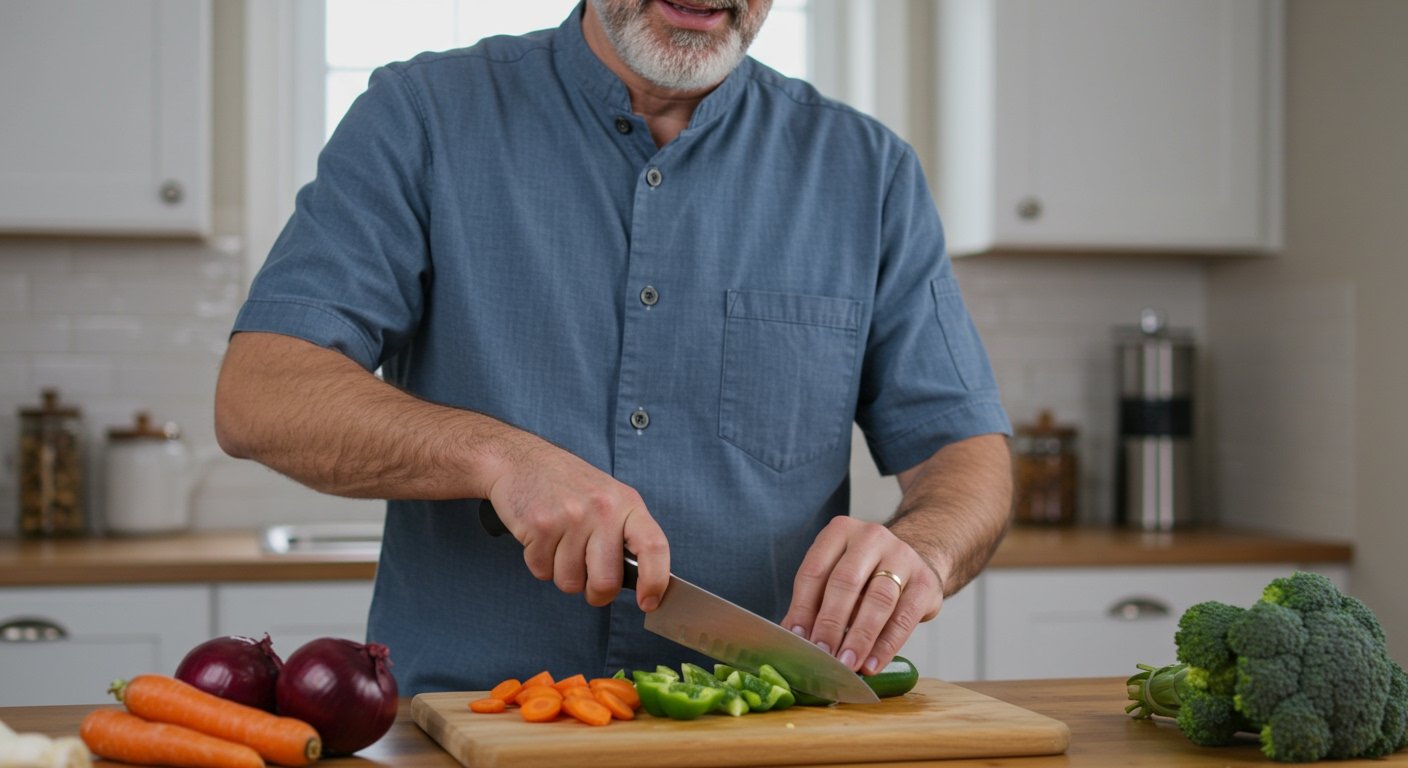
Why Mastering Basic Knife Skills is Essential for Home Cooks
Many home cooks overlook the importance of developing good knife skills, often leading to slower prep times, unevenly cooked food, and a higher risk of injury. In fact, more than 322,000 emergency room visits in 2017 stemmed directly from knife-related incidents. [5] By investing time in learning proper knife handling and cutting techniques, you’re not just improving your culinary abilities; you’re creating a safer and more efficient kitchen environment. When food is cut uniformly, it cooks evenly, leading to better flavors and textures in your dishes. This is why knife skills are important for home cooks.
Understanding Your Tools: Best Kitchen Knives for Beginners
Before you start cutting, it’s crucial to understand your tools. While there’s a vast array of knives available, beginners primarily need two essential knives:
- Chef’s Knife: This is your workhorse. Typically 8-10 inches long, it’s versatile enough for chopping, slicing, and dicing most foods. [9]
- Paring Knife: Smaller (2-4 inches), ideal for delicate tasks like peeling fruits, trimming vegetables, or mincing small ingredients. [9]
Using the wrong knife for the job can cause uneven cuts and make chopping more difficult, highlighting the importance of investing in quality kitchen knives for better results. Choosing a comfortable, well-balanced knife is key to developing good habits.
How to Properly Hold a Kitchen Knife: Mastering Knife Grip Techniques
The way you hold your knife dramatically impacts your control and safety. The most common and recommended method is the ‘pinch grip’.
Proper Knife Handling: The Pinch Grip
1. Grip the Handle: Hold the handle firmly with your last three fingers.
2. Pinch the Blade: Your thumb and index finger should pinch the base of the blade, just in front of the handle. This provides maximum control over the blade’s movement. [5]
3. Relax Your Wrist: Keep your wrist relaxed, allowing for fluid motion rather than rigid chopping. [5]
This grip, a fundamental of effective knife grip techniques, gives you precision and prevents the knife from slipping.
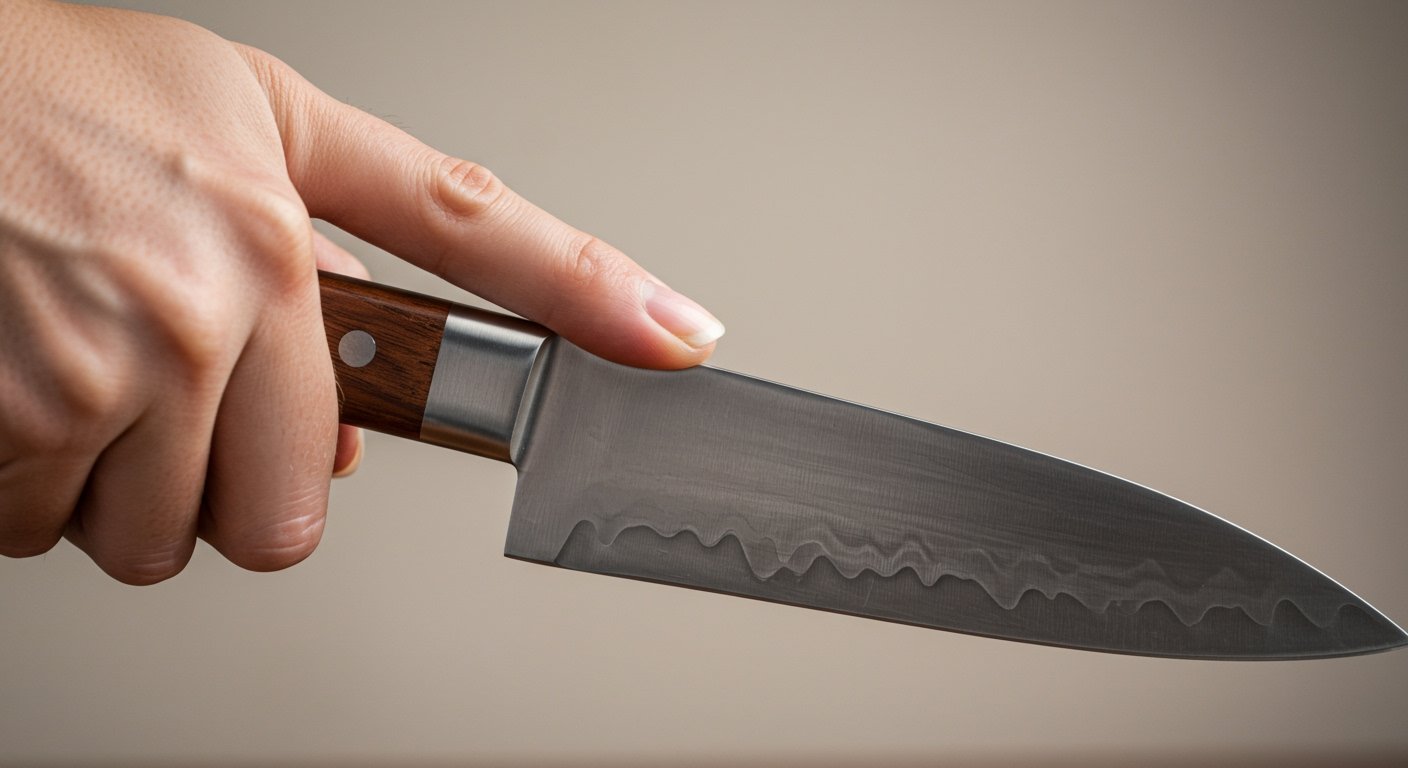
Knife Safety Tips for Beginners
Safety should always be your top priority in the kitchen, especially when handling sharp objects. Following these simple knife safety tips for beginners can prevent most accidents:
- Maintain a Sharp Knife: A sharp knife is a safe knife. Dull knives require more force, increasing the chance of slippage and injury. [5], [8]
- Use a Stable Cutting Surface: Always place a damp cloth or non-slip mat under your cutting board to prevent it from sliding. [3], [8]
- The ‘Claw’ Grip: To protect your fingers while cutting, curl your fingertips inward, holding the food with your knuckles guiding the blade. Your thumb should be tucked behind your curled fingers. [5], [8]
- Cut Away from Your Body: Always direct the blade away from yourself. [3]
- Never Try to Catch a Falling Knife: It’s an instinctive reaction, but letting it fall is safer than attempting to grab a sharp blade. [4], [8]
- Clean Knives Properly: Wash knives immediately after use, by hand, with the blade facing away from you. Never leave them soaking in a sink of soapy water where they can’t be seen. [4], [5], [8]
- Store Knives Safely: Use a knife block, magnetic strip, or sheaths to protect blades and prevent accidental cuts. [4], [8]
For more detailed guidance on knife safety, consult resources like those provided by Ottawa Public Health. [8]

Essential Basic Knife Cuts for Home Cooks
Learning a few fundamental cutting techniques will allow you to prepare most recipes with confidence. Consistent cuts not only look professional but also ensure even cooking. [10] Here are some of the most important knife cuts for home cooks and beginner cutting techniques:
How to Mince Garlic
Mincing garlic means cutting it into very tiny, irregular pieces. This releases its strong aromatic oils. To mince garlic:
1. Smash a peeled clove with the side of your chef’s knife to flatten it.
2. Roughly chop it.
3. Place your guiding hand on the spine (top, dull edge) of the knife and rock the blade rapidly back and forth over the garlic until it reaches your desired fineness. [12]
Dicing Onion Technique
Dicing an onion might seem daunting, but it’s straightforward with the right technique:
1. Cut the onion in half through the root end.
2. Peel the skin, leaving the root intact (this holds the onion together).
3. Place the flat side down. Make horizontal cuts towards the root, without cutting all the way through.
4. Make vertical cuts, perpendicular to the horizontal cuts, again not cutting through the root.
5. Finally, slice across the onion from the top, creating even dice. [15]
Chopping Vegetables Safely
For general chopping vegetables safely, especially larger items like carrots or celery, aim for uniform pieces. Start by creating a flat, stable surface on the vegetable by slicing off a small side. This prevents rolling and makes subsequent cuts much safer. Remember to use your claw grip!
Understanding the Julienne Cut
The julienne cutting technique creates long, thin matchstick-like strips, typically ⅛ inch x ⅛ inch x 2 inches. [10] This is perfect for stir-fries, garnishes, or crudités. To achieve a julienne:
1. Square off your vegetable (e.g., a carrot) by trimming its sides.
2. Slice it into thin, even planks.
3. Stack the planks and cut them lengthwise into uniform matchsticks. [10]
For a comprehensive list of culinary knife cuts, refer to Wikipedia’s entry on culinary knife cuts. [2]
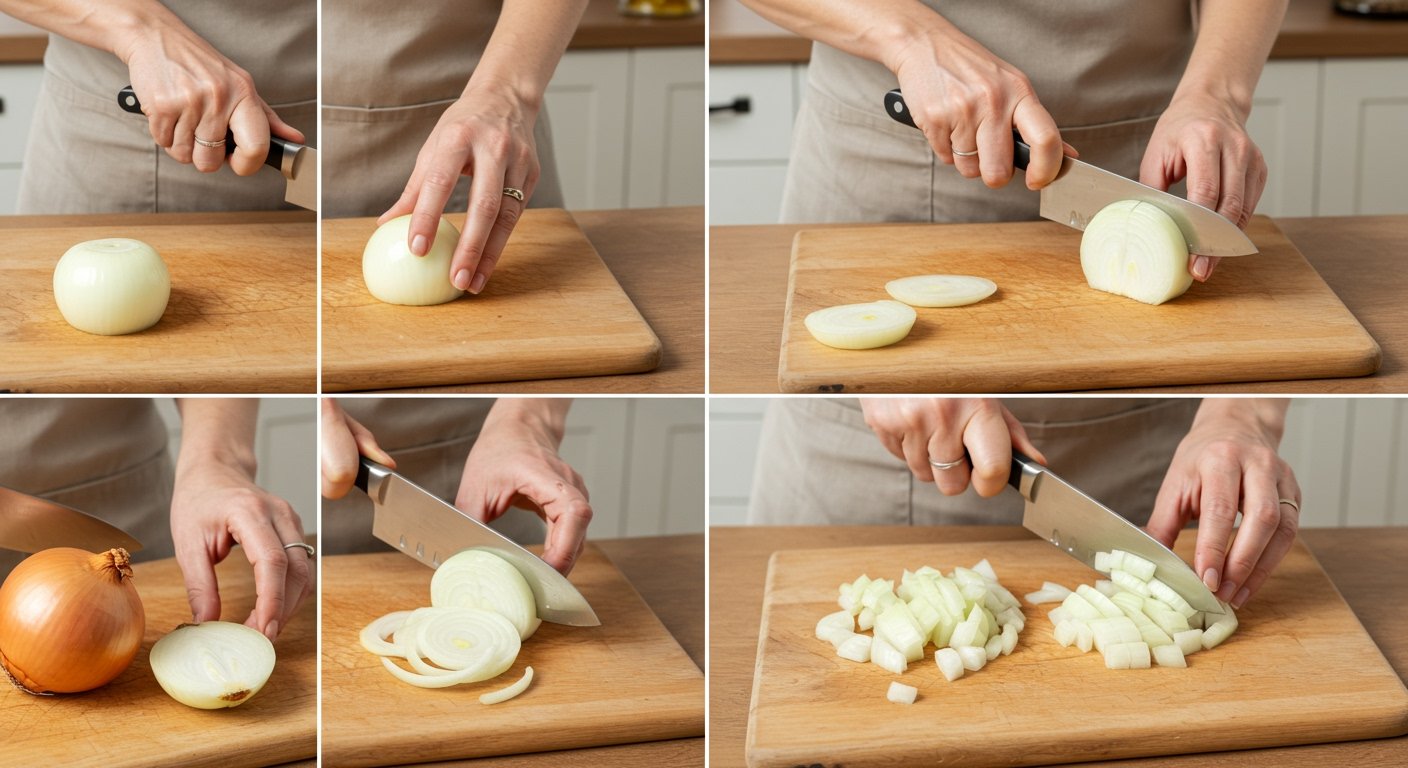
Sharpening Your Knife at Home: Why a Sharp Knife is Safer
One of the most common misconceptions is that a dull knife is safer than a sharp one. This is simply not true. Why is a sharp knife safer than a dull one? A sharp knife cuts cleanly and predictably, requiring less force and reducing the chance of slipping. A dull knife, on the other hand, can slip off food, leading to more dangerous accidents. [5]
Many home cooks neglect this crucial aspect of essential kitchen knife care; in 2020, 29% of U.S. consumers reported that they do not sharpen their knives at all. [5] Regular sharpening not only improves safety but also makes cutting much easier and more enjoyable.
Honing vs. Sharpening
- Sharpening actually removes a tiny bit of metal from the blade to create a new, sharper edge. This is usually done with a whetstone or an electric sharpener. For home cooks, sharpening once or twice a month is often sufficient, depending on usage. [11]
- Honing realigns the microscopic edge of a blade that has bent over with use. A honing steel doesn’t sharpen the knife but keeps an already sharp knife performing optimally. It’s recommended to hone your knife every few uses. [1], [11]
For expert tips on how to sharpen your knife at home, consider resources from reputable culinary institutions like the Culinary Institute of America. [1]
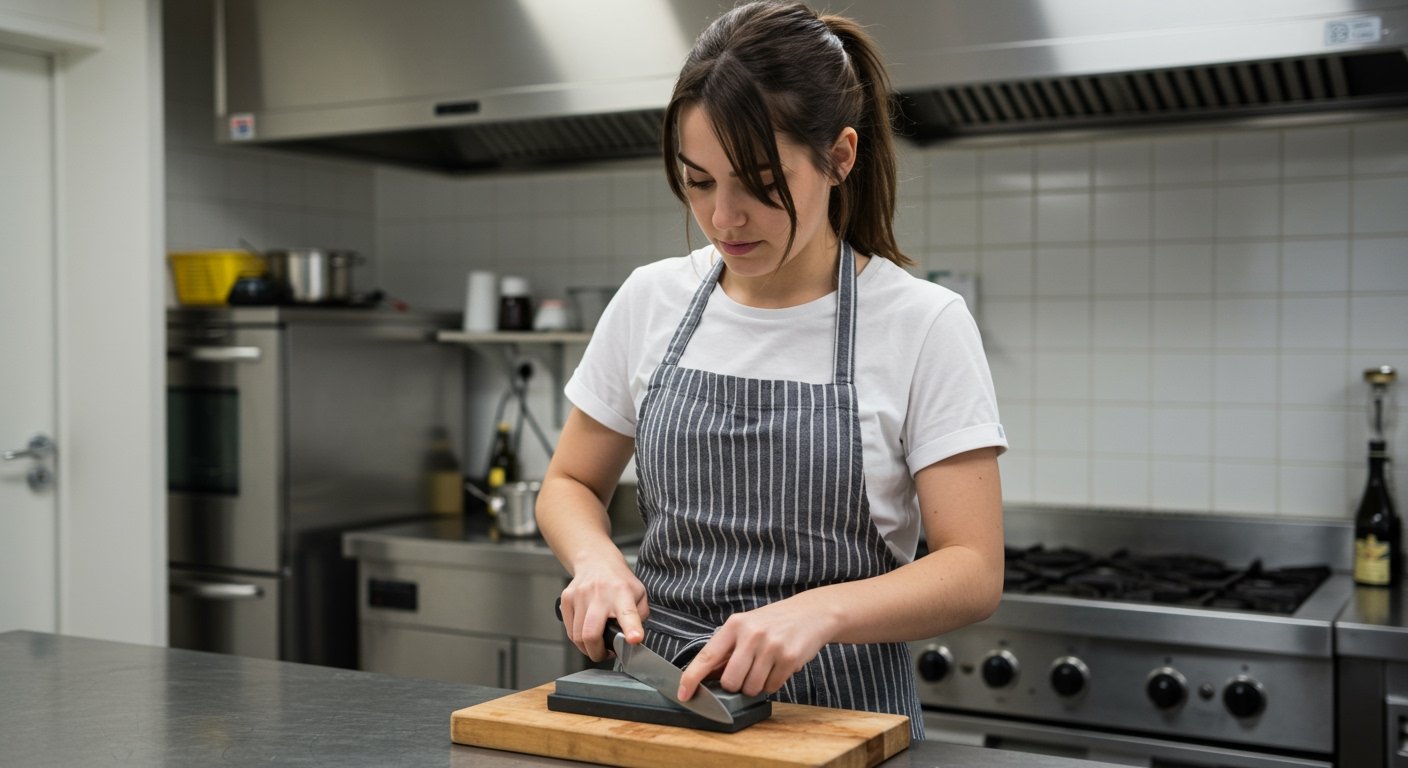
Practice Makes Perfect: Improving Knife Skills Quickly
Like any skill, knife proficiency comes with practice. How can I improve my knife skills and speed? Dedicate short, consistent practice sessions to basic knife skills for home cooks.
Knife Skill Practice Drills:
- The Carrot Challenge: Practice making perfectly uniform slices, sticks (batonnets), and dice from carrots. Focus on consistency over speed initially.
- Onion Dicing Reps: Onions are inexpensive and great for practicing your dicing technique repeatedly.
- The Rocking Mince: Spend time perfecting the rocking motion for mincing garlic or herbs.
Start slowly, focusing on precision and safety. As you gain confidence, your speed will naturally increase. Remember, the goal is not just to cut fast, but to cut safely and consistently. These improving knife skills quickly will transform your kitchen confidence.
Conclusion
Mastering basic knife skills for home cooks is an empowering journey that enhances your culinary capabilities, boosts your kitchen confidence, and most importantly, ensures your safety. By understanding your tools, employing proper grip techniques, adhering to safety guidelines, practicing fundamental cuts, and maintaining sharp blades, you’ll elevate your cooking from a chore to a true joy. Embrace the learning process, be patient with yourself, and soon you’ll be slicing, dicing, and mincing like a seasoned pro.
Key Takeaways
- Proper knife grip (pinch grip) is crucial for control and safety.
- Always prioritize safety by using the ‘claw grip’ to protect your fingers.
- A sharp knife is significantly safer and more efficient than a dull one.
- Practice fundamental cuts like dicing, mincing, and julienne for consistent cooking.
- Regular practice and proper knife care are key to improving knife skills quickly.
Frequently Asked Questions
What is the most important knife skill for a home cook?
The most important knife skill for a home cook is maintaining proper knife safety, which includes using a pinch grip, a claw grip for your guiding hand, and always using a sharp knife on a stable cutting board.
How often should a home cook sharpen their knives?
For an average home cook, sharpening your knives with a whetstone once or twice a month is generally sufficient. Honing your knife with a steel every few uses will help maintain its edge between sharpenings. [11]
Can I really improve my knife skills on my own?
Absolutely! Consistent practice with basic drills, focusing on precision and safety first, will significantly improve your knife skills over time. Start slowly and gradually increase your speed as you gain confidence.
What are the common mistakes beginners make with knives?
Common mistakes include using dull knives, not using a stable cutting board, improper grip (often gripping too far back on the handle), not using the ‘claw grip’ to protect fingers, and rushing cuts before mastering technique.
